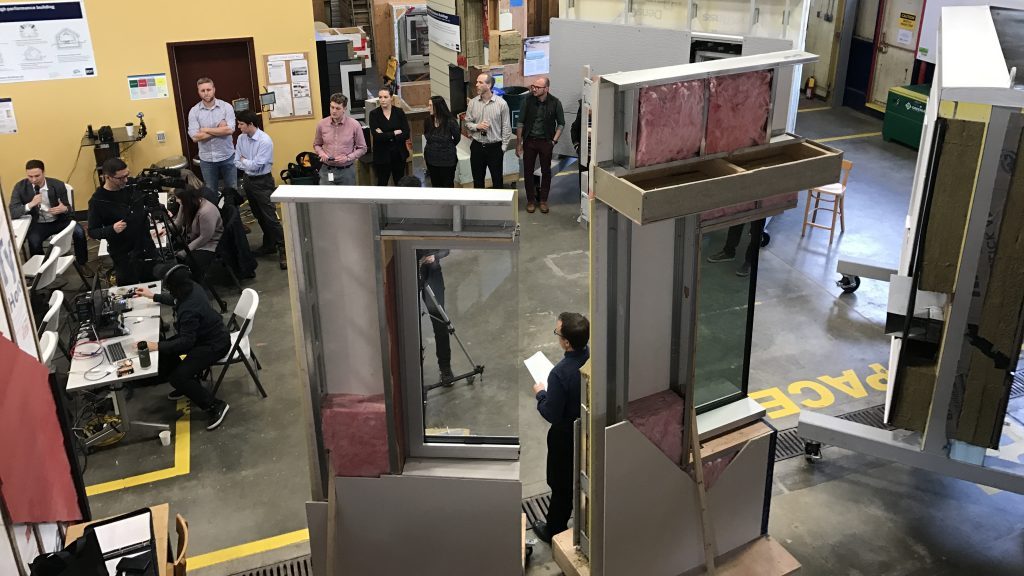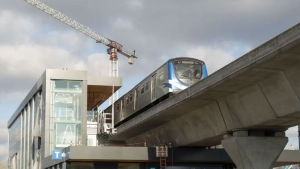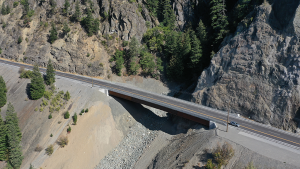Some 300-plus British Columbia-based contractors, architects and public officials took part recently in a three-hour webinar on high-performance walls and how to build them.
Building Smart: Key Considerations for High-Performance Walls, dealt with how Part Three buildings can meet higher levels of performance as required by Passive House, the BC Energy Step Code and the City of Vancouver’s Zero Emissions Building Plan.
Part Three buildings, according to the BC Building Code, are taller than four storeys and more than 600 square metres in area (e.g. highrise condos, malls, office buildings, hospitals, schools and churches).
The City of Vancouver’s Zero Emissions Building Plan, released in 2016, requires most new buildings to be near zero-emissions by 2025 and all new buildings to be zero-emissions by 2030.
British Columbia’s BC Energy Step Code (2017) requires all new buildings to be net-zero-ready by 2032.
Part of the webinar dealt with typical wall assemblies and how to meet or exceed the insulation R-values required for the higher levels of the step code.
The event also outlined guides and tools on such subjects as reducing energy consumption and greenhouse gas emissions and increasing resilience and passive survivability.
The webinar featured two large mock-ups of wall assemblies that were constructed by Flynn Canada Ltd.
Some of the event’s many sponsors were Flynn, BC Housing, the British Columbia Institute of Technology and ZEBx.
Leading the webinar were Neil Norris, a senior technical consultant with Passive House Canada, Patrick Roppel, a principal and building science specialist in the Vancouver office of Morrison Hershfield, and Christian Cianfrone, executive director of ZEBx.
The speakers discussed different aspects of zero-emission standards and high-performance walls and their various features and benefits.
“The purpose of net-zero and net-zero ready standards is to create buildings that require so little energy to maintain comfortable conditions that most, if not all, of the required energy could be reasonably provided by onsite sources of renewable energy, such as solar panels, geothermal and wind turbines,” said Norris.
“Previously the thermal performance of the building envelope could be more or less neglected in favour of a really good mechanical heating system. Now the performance of both will need to be considered.”
Roppel said more attention needs to be paid to design and construction for multi-unit residential buildings to meet Passive House and net-zero energy standards.
“Not only are more insulation and thicker assemblies required, but the impact of thermal bridging at every junction between building components needs to be evaluated,” he said.
Minimizing the impact of thermal bridges is “a cornerstone” of thermally efficient building envelopes, Roppel said.
“Other design considerations, however, are equally important for complying with the requirements of the building code and constructing a good building envelope,” he said. “Design requirements are, in no particular order, fire protection and combustibility, environmental separation, structural support, durability and constructability.”
Roppel said there are a number of guides and tools available for reducing energy consumption and greenhouse gas emissions, and increasing resilience and passive survivability.
One of the webinar participants was Peter Peczek, owner/operator of Solleta Custom Homes in Kelowna.
“I took a part in the webinar to learn more about how to conserve house energy,” said Peczek. “I thought it was very informative. It showed how builders can make outside walls to have a better R-value. It also showed us how to insulate and install windows better.”
Jason Burtwistle, sustainability co-ordinator at HCMA Architecture and Design in Vancouver, said the webinar showed him the importance of designing the elevations and facade layout of a building as early as possible to minimize the amount of girts or clips through the assembly.
“In order to make these decisions early, it is important to engage with the contractor and supplier, because every system is different,” said Burtwistle.
“I also learned about Thermal.ly, a website that will soon be launched with different thermal bridging details.”
Cianfrone said the ZEBx organization was launched in Vancouver in 2018 to help the industry accelerate the implementation of zero-emissions buildings.
“In our first year, in collaboration with our delivery partner Passive House Canada, we organized 60 industry events that engaged more than 2,000 industry professionals,” said Cianfrone. “The events were mainly in-person workshops, tours, socials, educational courses and dialogues. This was our first widely broadcast webinar.”











Recent Comments
comments for this post are closed